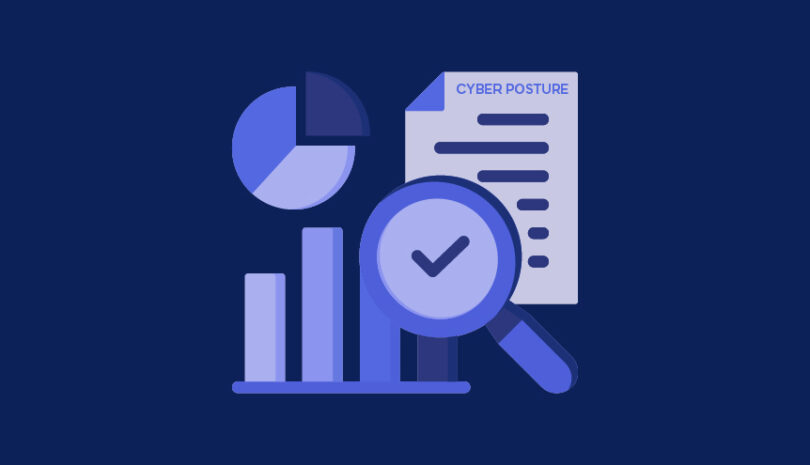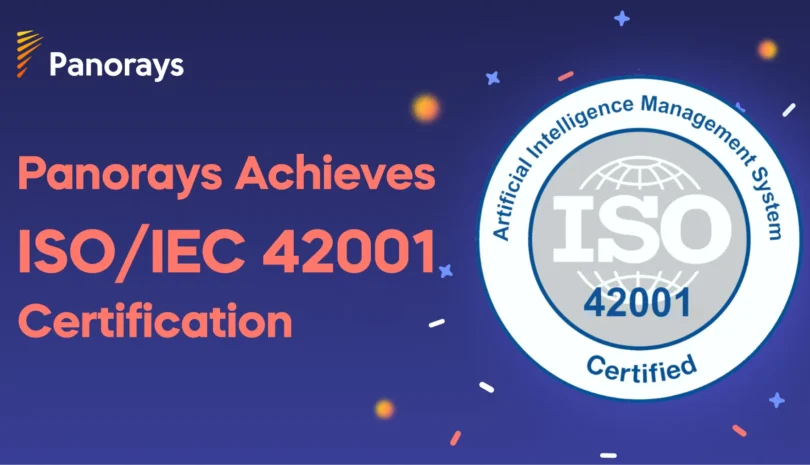Cloud adoption has become a cornerstone of digital transformation, with organizations of all sizes relying on SaaS, IaaS, and PaaS providers to operate efficiently and scale quickly. From productivity suites and HR platforms to core infrastructure and data hosting, the cloud has embedded itself into nearly every business function.
Yet this convenience comes with significant risk. Many organizations underestimate the security and compliance challenges introduced by cloud vendors, assuming that providers handle all aspects of protection. In reality, shared responsibility models mean that customers retain accountability for critical layers of data security, access controls, and regulatory compliance. Misaligned expectations can lead to dangerous gaps.
That’s why effective cloud vendor risk management is more than a checklist; it’s a critical practice for resilience. By assessing and monitoring cloud service providers continuously, companies can protect sensitive data, meet compliance obligations, and strengthen trust across their digital ecosystem.
Why Cloud Vendors Pose Unique Security Challenges
Cloud service providers play a central role in storing, processing, and transmitting sensitive data at scale. Unlike traditional on-premises systems, cloud environments often bypass the familiar perimeter defenses organizations rely on, creating blind spots in visibility and control. A single misconfigured setting or weak integration point can expose critical assets to attackers.
Adding to the complexity is the shared responsibility model. While providers secure the underlying infrastructure, customers remain accountable for areas such as access management, data protection, and compliance alignment. Many organizations mistakenly assume that vendors handle everything, only to discover too late that gaps in oversight leave them vulnerable.
These challenges make cloud vendors fundamentally different from other third parties. Effective security requires not just trust in the provider’s controls, but also proactive monitoring, clear accountability, and well-defined processes for managing risks that span across both vendor and customer environments.
Cloud Vendor Risk Management Defined
Cloud vendor risk management is the practice of identifying, assessing, and continuously monitoring the risks posed by cloud service providers. While traditional vendor assessments often focus on financial stability or general security practices, cloud vendors introduce technical complexities that require a more specialized approach.
Key elements include continuous monitoring of security posture, verification of compliance with standards such as SOC 2 or ISO 27001, and contextual risk scoring that accounts for the sensitivity of the data handled. These factors help organizations prioritize oversight of high-impact providers over those with limited exposure.
Cloud service providers also differ from non-technical suppliers in fundamental ways. Unlike a logistics partner or office supplier, CSPs often have direct access to customer systems and data. This level of integration means that a single misconfiguration, outage, or breach can cascade across an entire ecosystem, making proactive risk management essential.
The Third-Party Cloud Security Problem
Cloud vendors have been at the center of some of the most disruptive cyber incidents in recent years. High-profile examples, such as the MOVEit file transfer breach, showed how a single compromise at a widely used provider could cascade to thousands of downstream organizations. Similarly, misconfigurations in cloud storage services have repeatedly exposed sensitive customer data, highlighting how small oversights can create massive vulnerabilities.
These incidents underscore a fundamental challenge: organizations often lack visibility into how their cloud providers secure data, monitor environments, and manage their own sub-vendors. The problem doesn’t stop at direct providers; fourth- and Nth-party reliance means that a single weak link in the supply chain can affect entire ecosystems.
Misconfigurations, hidden dependencies, and limited transparency make cloud vendors one of the riskiest categories of third parties. Without strong oversight, businesses may inherit risks they cannot directly control or even detect.
SaaS Vendor Risk Assessment: Don’t Overlook the Everyday Tools
Organizations increasingly rely on dozens of SaaS applications to manage their daily operations, encompassing everything from CRM platforms and HR systems to marketing automation and file-sharing tools. While these applications may not always seem business-critical, each one has access to sensitive data, user credentials, or customer information that could be exploited if security is weak.
The challenge is that SaaS vendors often fall outside traditional high-priority risk reviews, leaving gaps in oversight. A breach at a “non-critical” app can still expose sensitive data or provide a foothold for attackers to move laterally across systems.
The best practice is to tailor the depth of risk assessments based on both the type of data handled and the business impact if the application is compromised. Lightweight reviews may be sufficient for low-risk tools, but SaaS vendors handling regulated or customer-facing data require deeper, ongoing assessments.
Cloud Vendor Due Diligence: What to Ask Before You Sign
Selecting a cloud service provider is not just a procurement decision; it’s a long-term security commitment. Before signing an agreement, organizations should perform careful due diligence to understand how a provider manages data protection, compliance, and incident response.
Start with encryption practices. Ask how the provider secures data both in transit and at rest, and whether customer-managed keys are an option. Compliance is another critical area. Confirm which frameworks they meet, such as SOC 2, ISO 27001, HIPAA, or GDPR, and request evidence of certifications or audit reports.
Finally, evaluate incident response capabilities. Providers should be able to explain how quickly they detect, investigate, and disclose breaches, as well as their process for working with customers during remediation. These questions help distinguish between providers that merely check boxes and those that can demonstrate a mature, transparent approach to safeguarding customer data.
Best Practices for Cloud Vendor Risk Management
Managing cloud vendors effectively requires a combination of proactive monitoring, structured assessments, and collaborative remediation. Relying on one-time reviews or static questionnaires is no longer enough in dynamic cloud environments.
One best practice is to pair external attack surface monitoring with automated questionnaires. This dual approach provides both an independent view of a vendor’s security posture and direct confirmation of their policies and practices. Automated workflows also reduce the administrative burden on both customers and providers.
Contextual risk scoring adds another layer of precision. Instead of treating all vendors equally, organizations can prioritize oversight based on the sensitivity of data handled, regulatory requirements, and the potential business impact of a breach. This ensures high-risk providers receive greater scrutiny.
Continuous monitoring is critical. Security risks evolve quickly, and ongoing assessments help detect new vulnerabilities or compliance gaps before they become incidents. When issues do arise, engaging vendors in joint remediation workflows strengthens accountability and speeds recovery.
Panorays simplifies this process by unifying monitoring, automated questionnaires, and risk scoring into a single platform. By enabling joint remediation and ongoing oversight, Panorays helps organizations move beyond checkbox compliance and build a truly resilient cloud vendor risk management program.
Cloud Vendors as the Core of Modern TPCRM
Cloud service providers are often the riskiest part of the vendor ecosystem. They hold vast amounts of sensitive data, support mission-critical operations, and connect to multiple downstream services. A single misconfiguration or breach at a cloud vendor can cascade across customers and partners, magnifying impact far beyond the initial point of compromise.
This reality means cloud vendor risk management cannot be treated as a simple compliance checkbox. Traditional vendor questionnaires or point-in-time reviews provide only partial assurance. To be effective, organizations must elevate their approach to a continuous, intelligence-driven process that accounts for the scale and complexity of cloud ecosystems.
Dynamic assessments, continuous monitoring, and real-time remediation workflows are the foundation of this approach. Panorays brings these capabilities together in a single platform, enabling security teams to gain visibility into cloud vendor risks, prioritize based on business impact, and engage suppliers in closing gaps faster.
By embedding cloud vendor oversight into third-party cyber risk management programs, organizations can protect their most valuable assets, meet regulatory demands, and strengthen resilience. Book a personalized demo to see how Panorays can help you modernize cloud vendor risk management with smarter assessments and automated workflows.
Cloud Vendor Risk Management FAQs
-
Cloud vendors can expose organizations to risks such as misconfigured storage, weak access controls, compliance gaps, and reliance on their own sub-vendors. Outages or breaches at these providers can cascade across multiple customers, amplifying the impact.
-
Cloud vendors can expose organizations to risks such as misconfigured storage, weak access controls, compliance gaps, and reliance on their own sub-vendors. Outages or breaches at these providers can cascade across multiple customers, amplifying the impact.
-
Traditional vendor risk management often focuses on financial health, operational stability, or basic security practices. Cloud vendor risk management requires a deeper technical lens, including evaluation of shared responsibility models, encryption practices, and compliance with security frameworks like SOC 2 or ISO 27001.
-
Continuous monitoring combines external attack surface assessments with automated questionnaires and contextual risk scoring. This approach provides real-time visibility into a provider’s security posture and ensures that emerging vulnerabilities are identified quickly, rather than only during periodic reviews.



